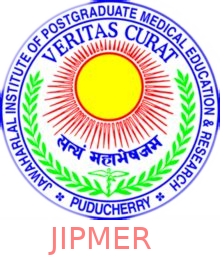
Accessory pathways - What are the targets for ablation?
Raja Selvaraj
Cardiac Electrophysiologist
Professor of Cardiology
JIPMER
Setting up the signals
Bipolar signals
- Identifying annulus location
- Earliest activation
- Identifying individual components of the signal may be difficult
Identify components of the signal

Identify components of the signal

Identify components of the signal
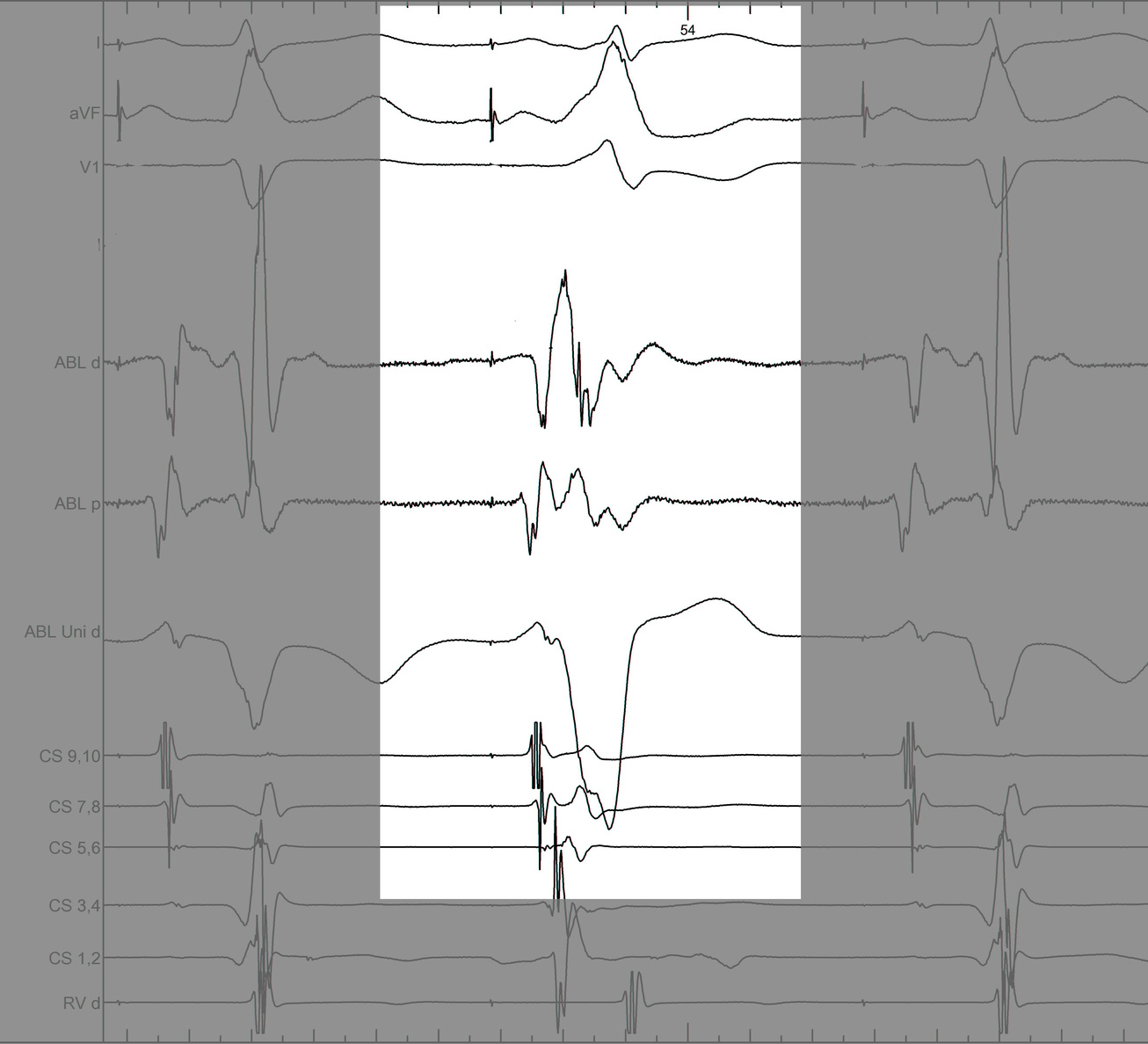
Identify components of the signal
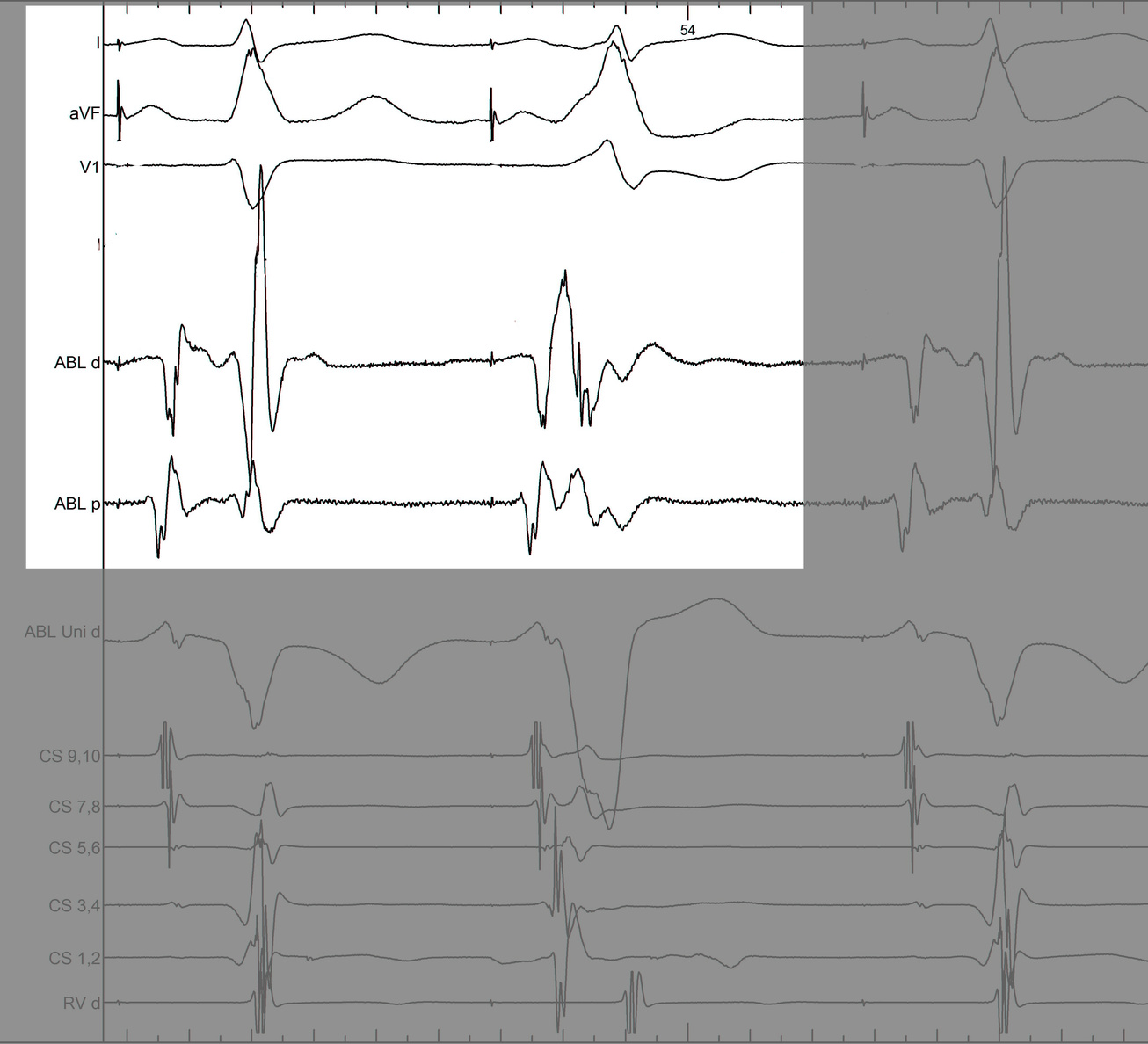
Pathway potential
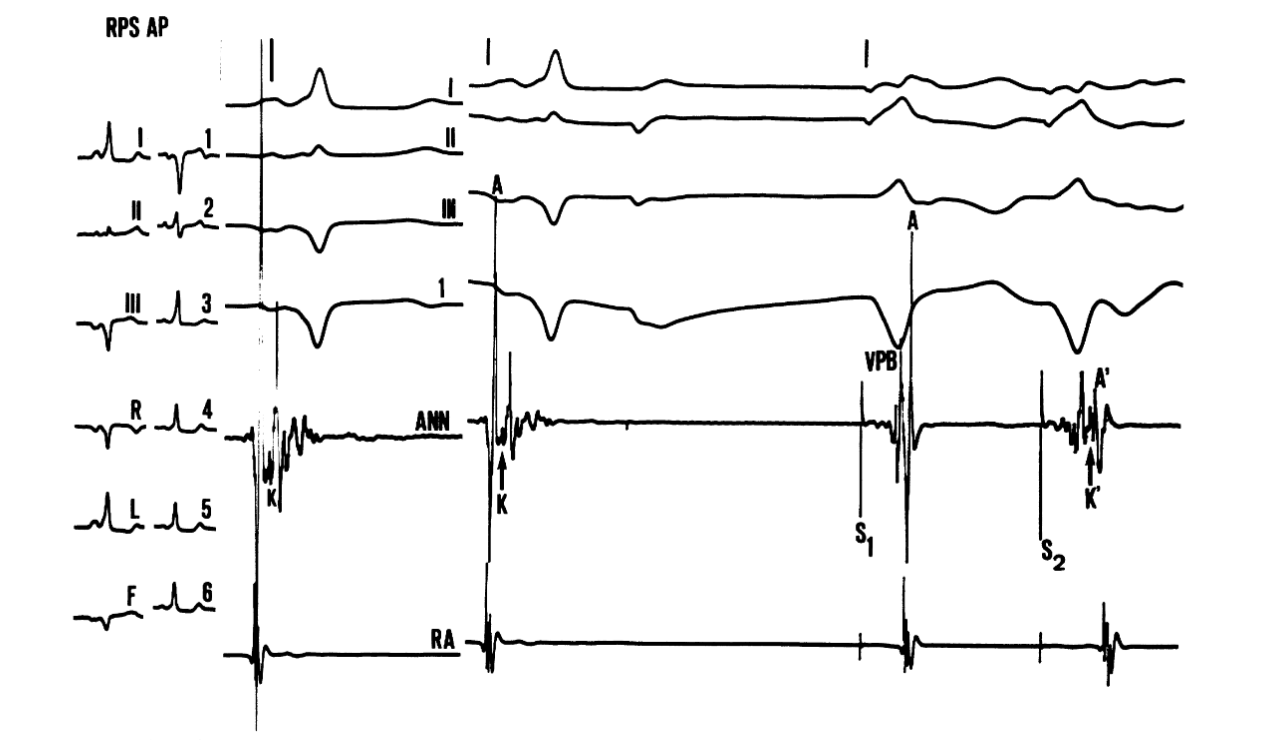
Warin JF, Haissaguerre M, Lemetayer P, Guillem JP, Blanchot P. Catheter ablation of accessory pathways with a direct approach. Results in 35 patients. Circulation. 1988 Oct;78(4):800-15. doi: 10.1161/01.cir.78.4.800.
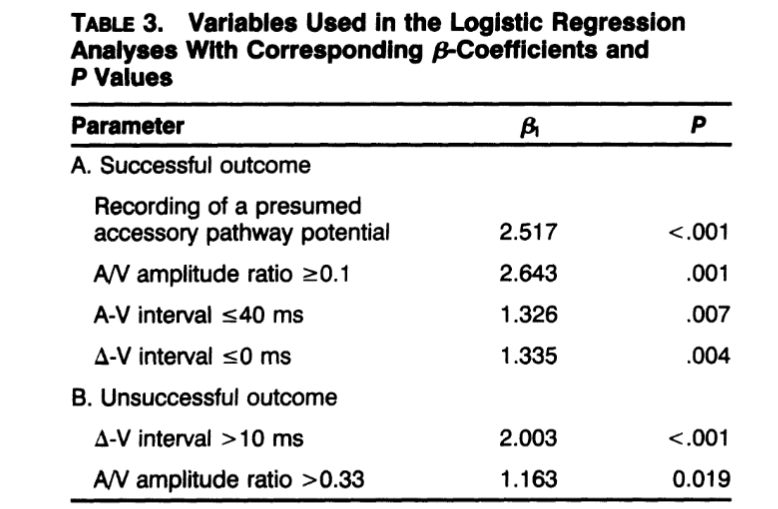
Cappato R, Schlüter M, Mont L, Kuck KH. Anatomic, electrical, and mechanical factors affecting bipolar endocardial electrograms. Impact on catheter ablation of manifest left free-wall accessory pathways. Circulation. 1994 Aug;90(2):884-94. doi: 10.1161/01.cir.90.2.884. PMID: 8044960.

Jackman WM, Friday KJ, Yeung-Lai-Wah JA, Fitzgerald DM, Beck B, Bowman AJ, Stelzer P, Harrison L, Lazzara R. New catheter technique for recording left free-wall accessory atrioventricular pathway activation. Identification of pathway fiber orientation. Circulation. 1988 Sep;78(3):598-611. doi: 10.1161/01.cir.78.3.598.
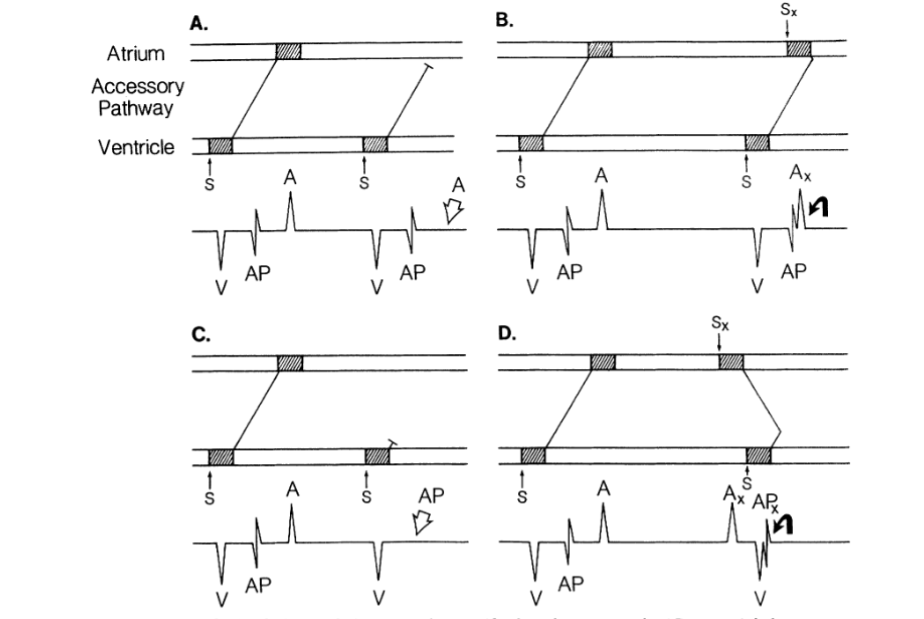
Jackman WM, Friday KJ, Yeung-Lai-Wah JA, Fitzgerald DM, Beck B, Bowman AJ, Stelzer P, Harrison L, Lazzara R. New catheter technique for recording left free-wall accessory atrioventricular pathway activation. Identification of pathway fiber orientation. Circulation. 1988 Sep;78(3):598-611. doi: 10.1161/01.cir.78.3.598.
Retrograde potential
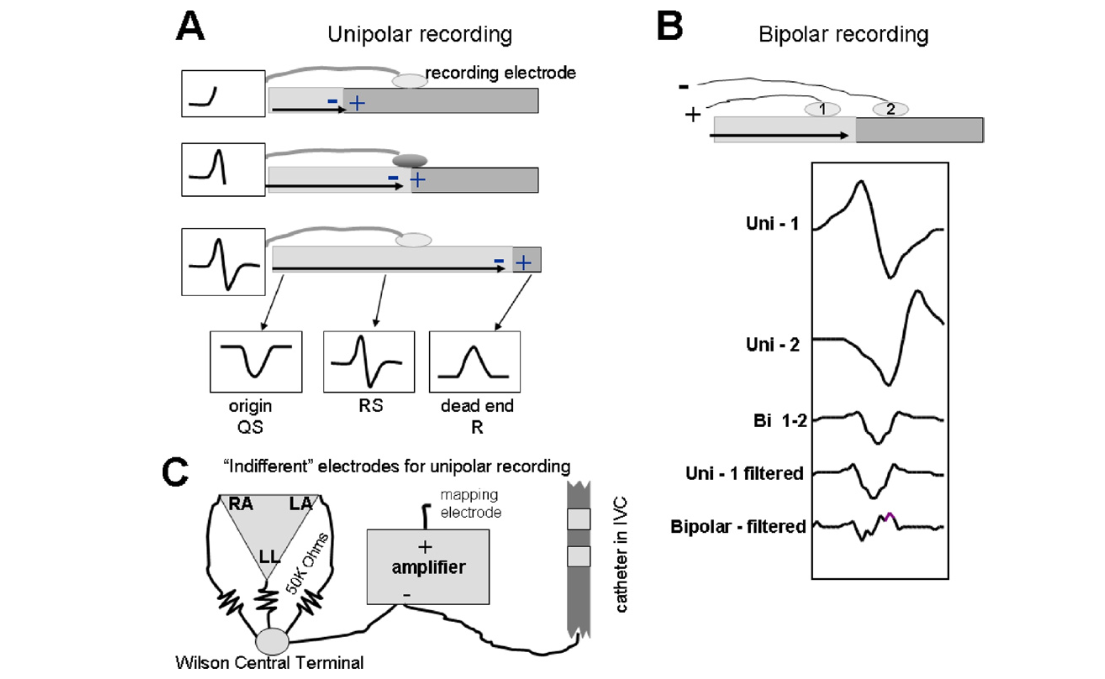
Recording and interpreting unipolar electrograms to guide catheter ablation. Usha B. Tedrow, MD, MSc William G. Stevenson, MD, FHRS. Heart Rhythm HANDS ON. VOLUME 8, ISSUE 5, P791-796, MAY 2011
EGM setup
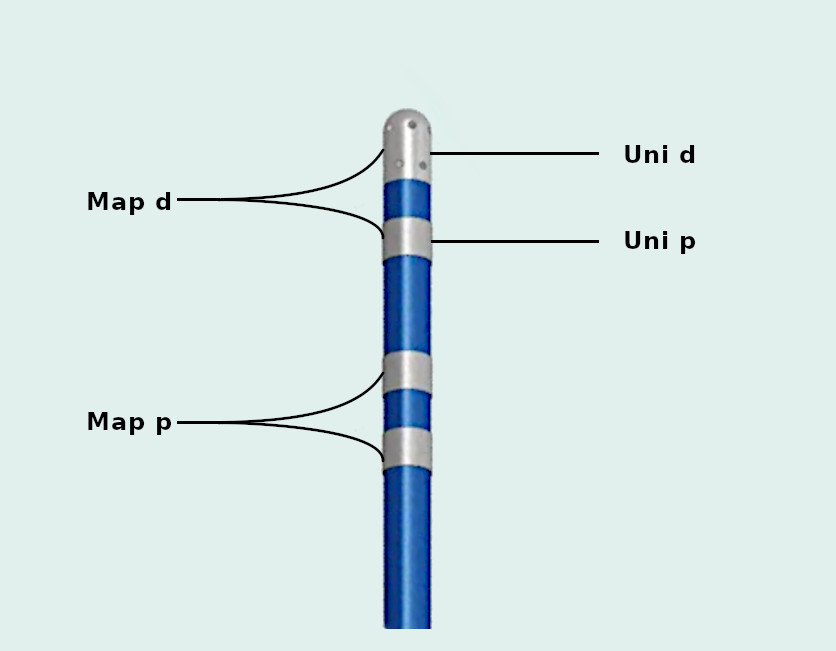
EGM set up
Unipolar
EGM target
Earliest A or shortest VA ?
Earliest A or shortest VA ?
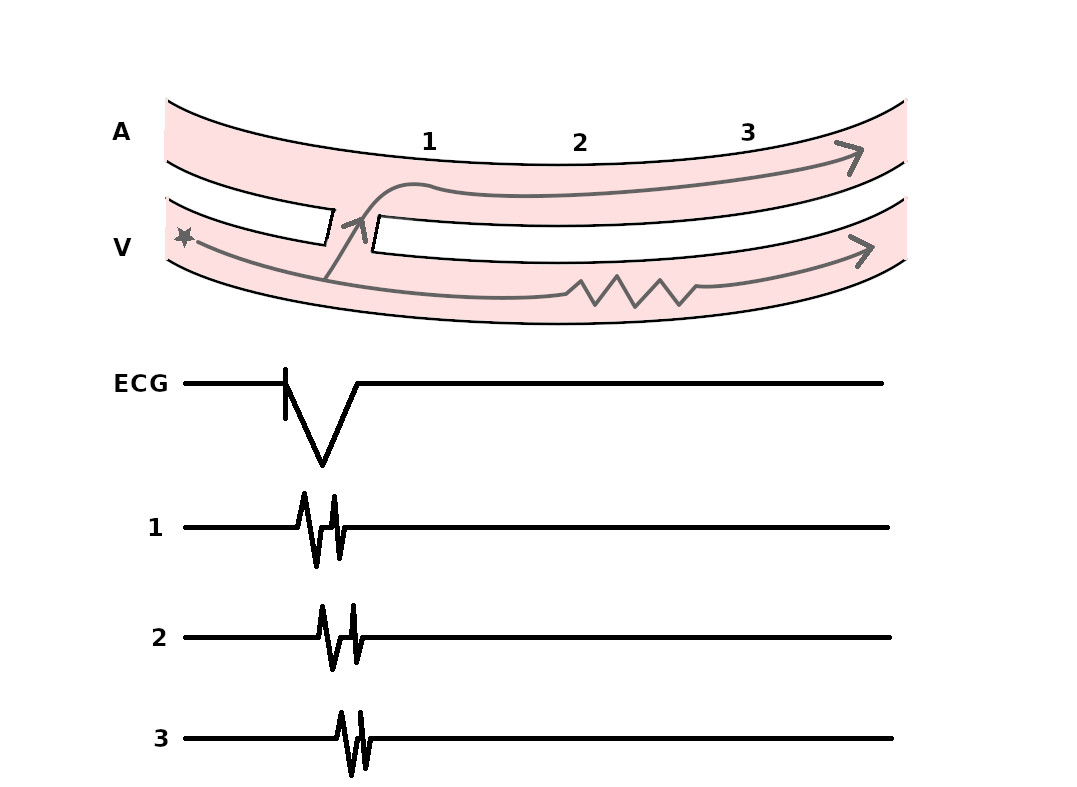
Earliest A or Potential ?
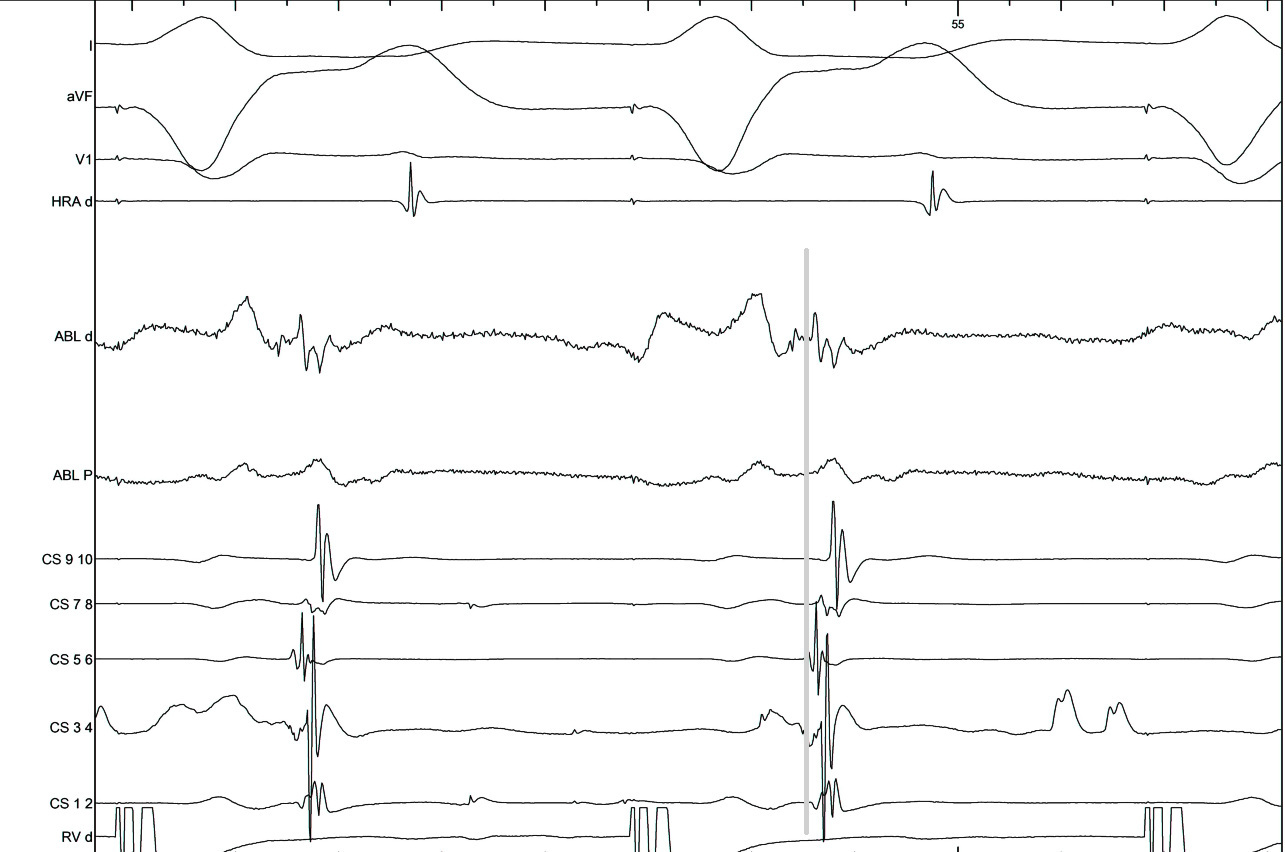
The “isolated AP potential” identifies the middle of the AP and is the ideal target for ablation
Warren Jackman
Accessory pathway recording and ablation. Heart Rhythm, Vol 18, No 5, May 2021;834, https://doi.org/10.1016/j.hrthm.2021.01.008
What is AP slant?
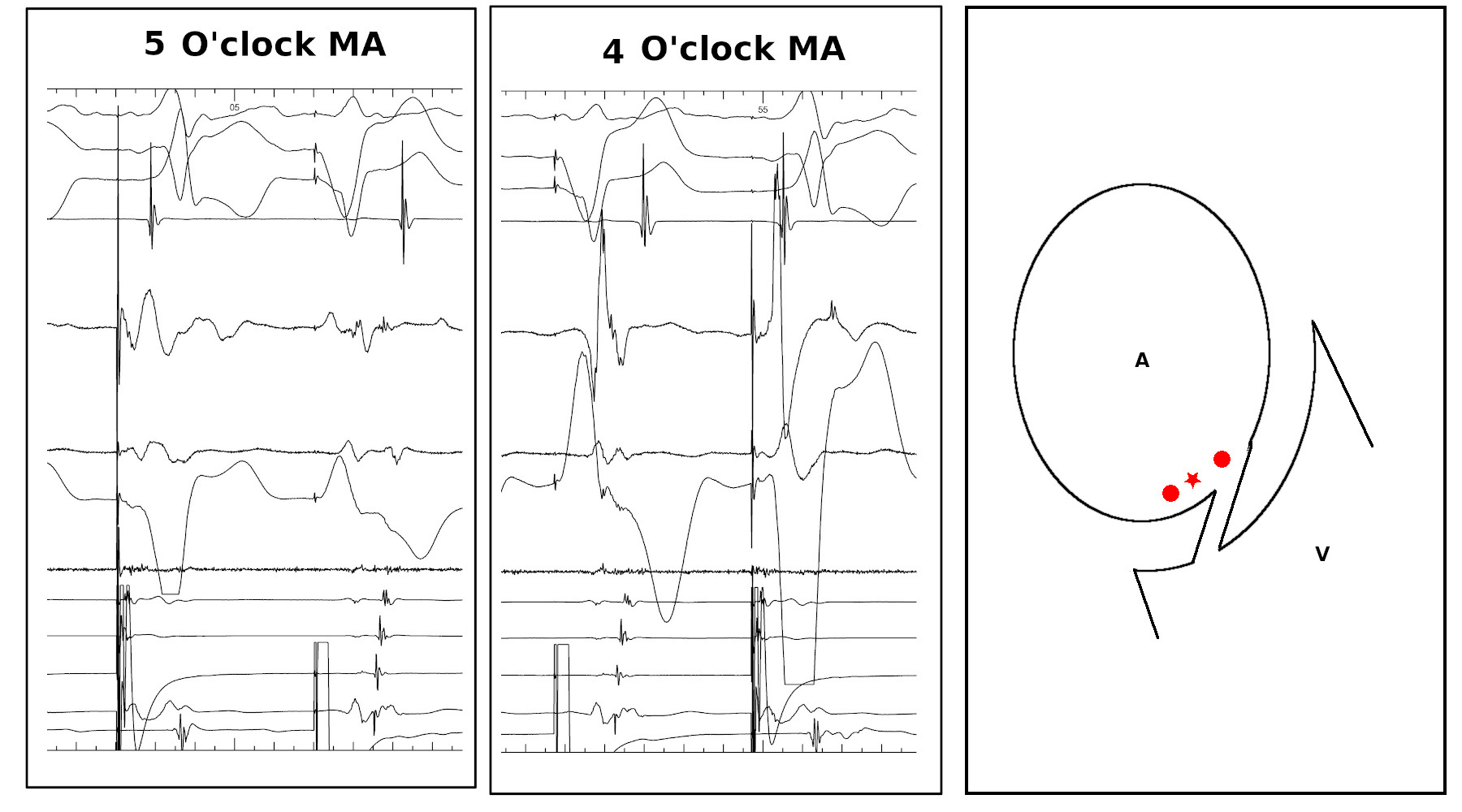
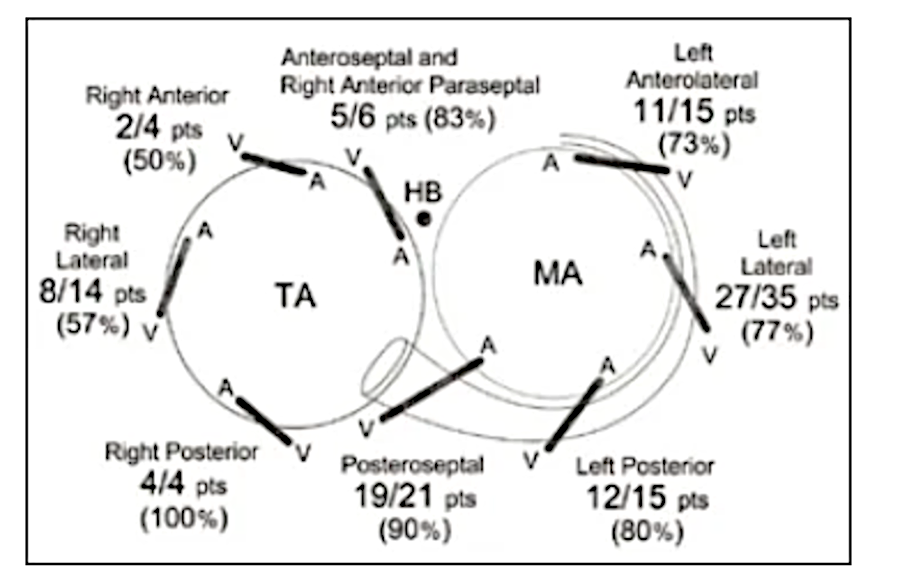
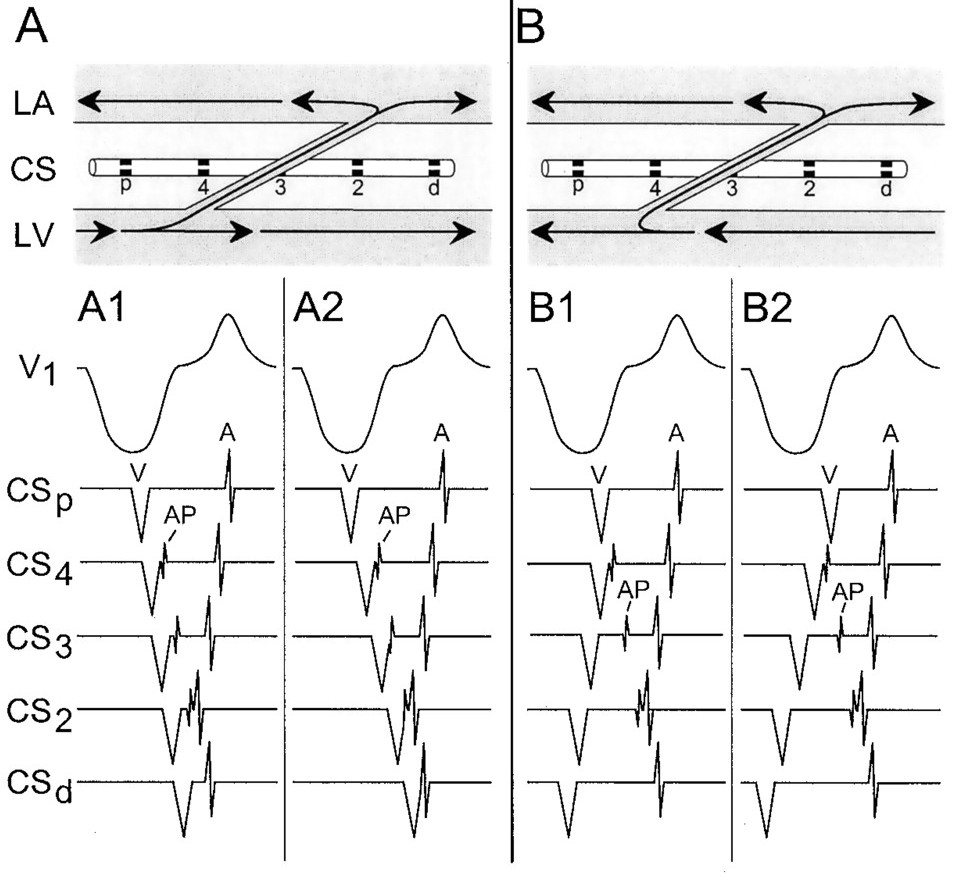
Otomo K, Gonzalez MD, Beckman KJ, Nakagawa H, Becker AE, Shah N, Matsudaira K, Wang Z, Lazzara R, Jackman WM. Reversing the direction of paced ventricular and atrial wavefronts reveals an oblique course in accessory AV pathways and improves localization for catheter ablation. Circulation. 2001 Jul 31;104(5):550-6. doi: 10.1161/hc3001.093499. PMID: 11479252.
Specific locations
Posteroseptal / Left posterior pathways
LA-CS potentials
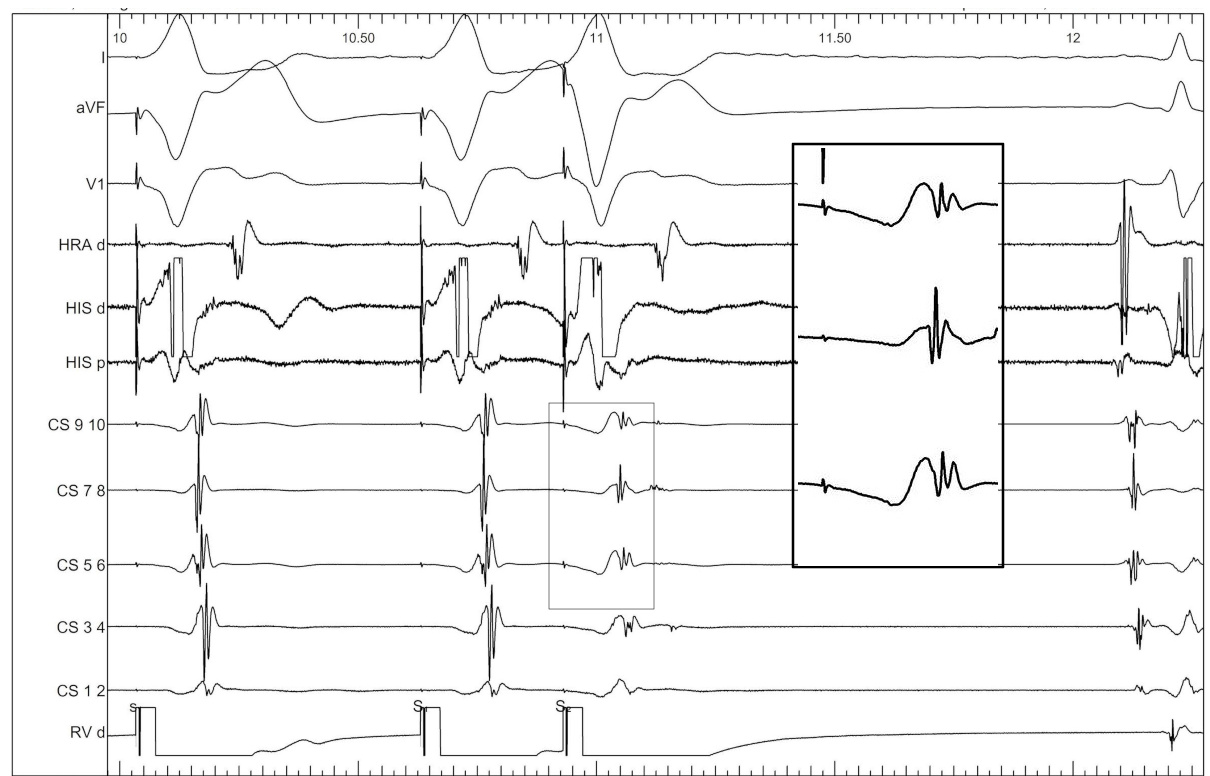
LA-CS potentials
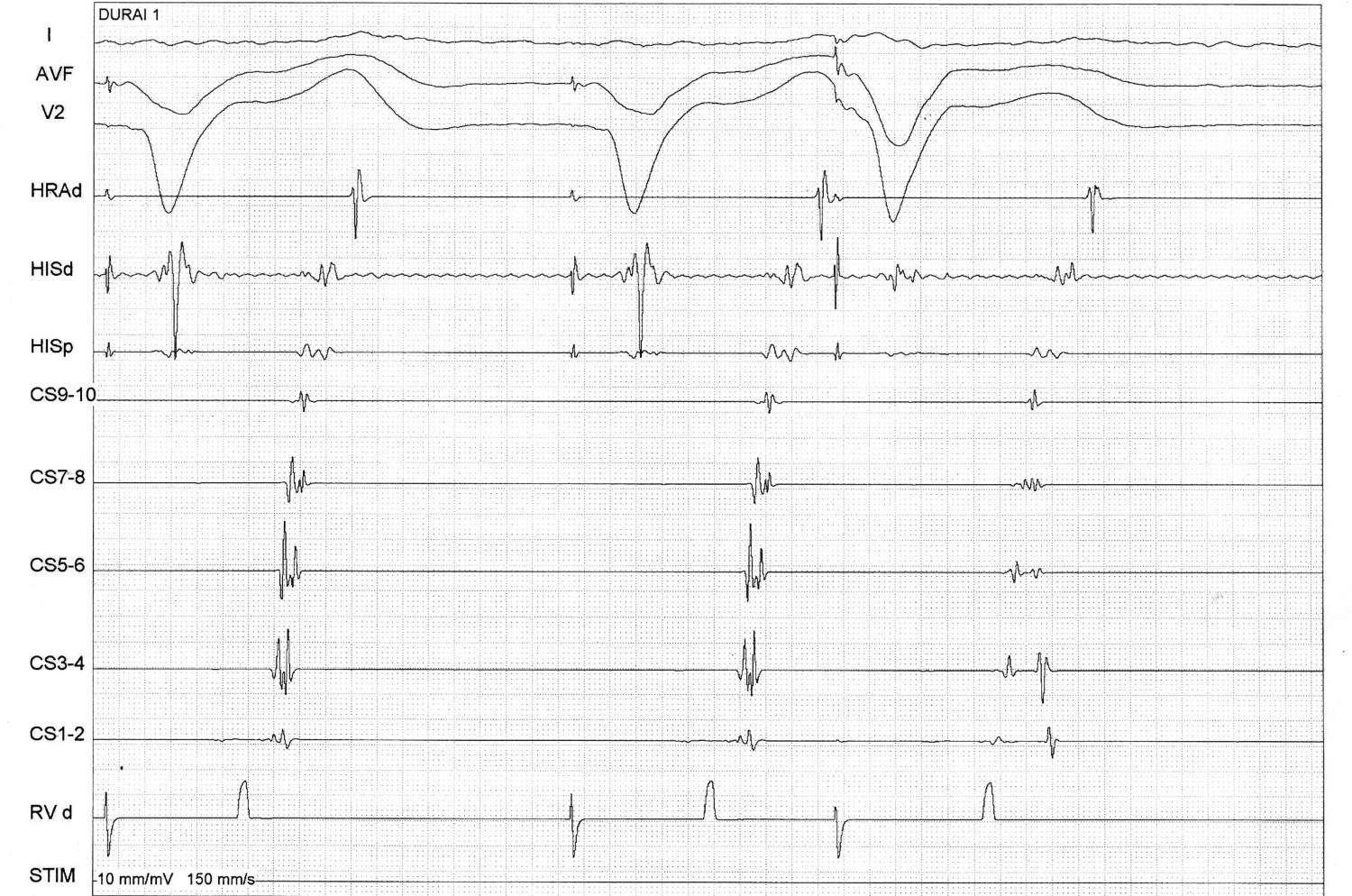
CS pathways
- Negative delta in lead II
- Previous failed ablation
- Atrial fibrillation - clinical or during EPS
- May or may not have diverticulum
Selvaraj RJ et al. Radiofrequency ablation of posteroseptal accessory pathways associated with coronary sinus diverticula. J Interv Card Electrophysiol. 2016 Nov;47(2):253-259. doi: 10.1007/s10840-016-0113-x.
CS diverticulum

Mapping in diverticulum
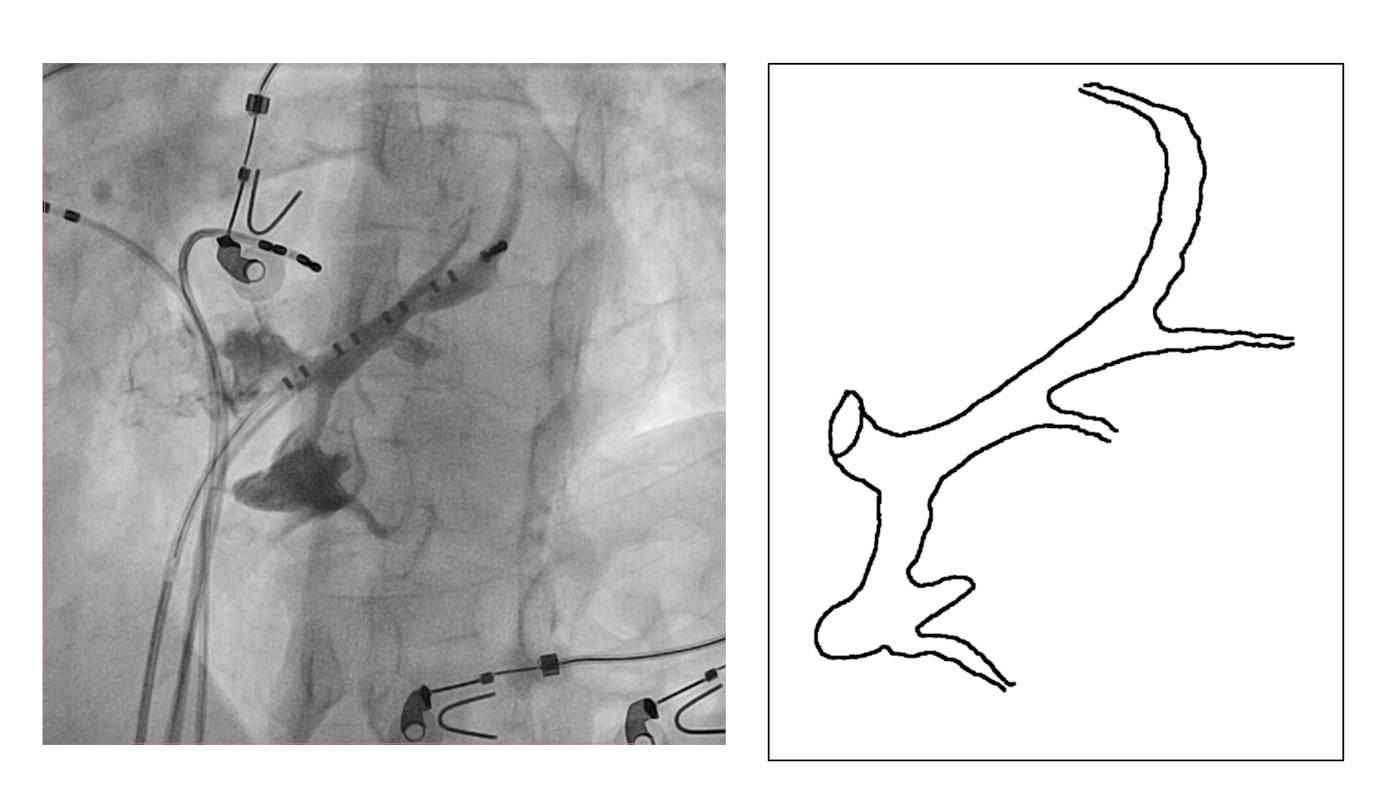
Mapping in diverticulum

Mapping in diverticulum
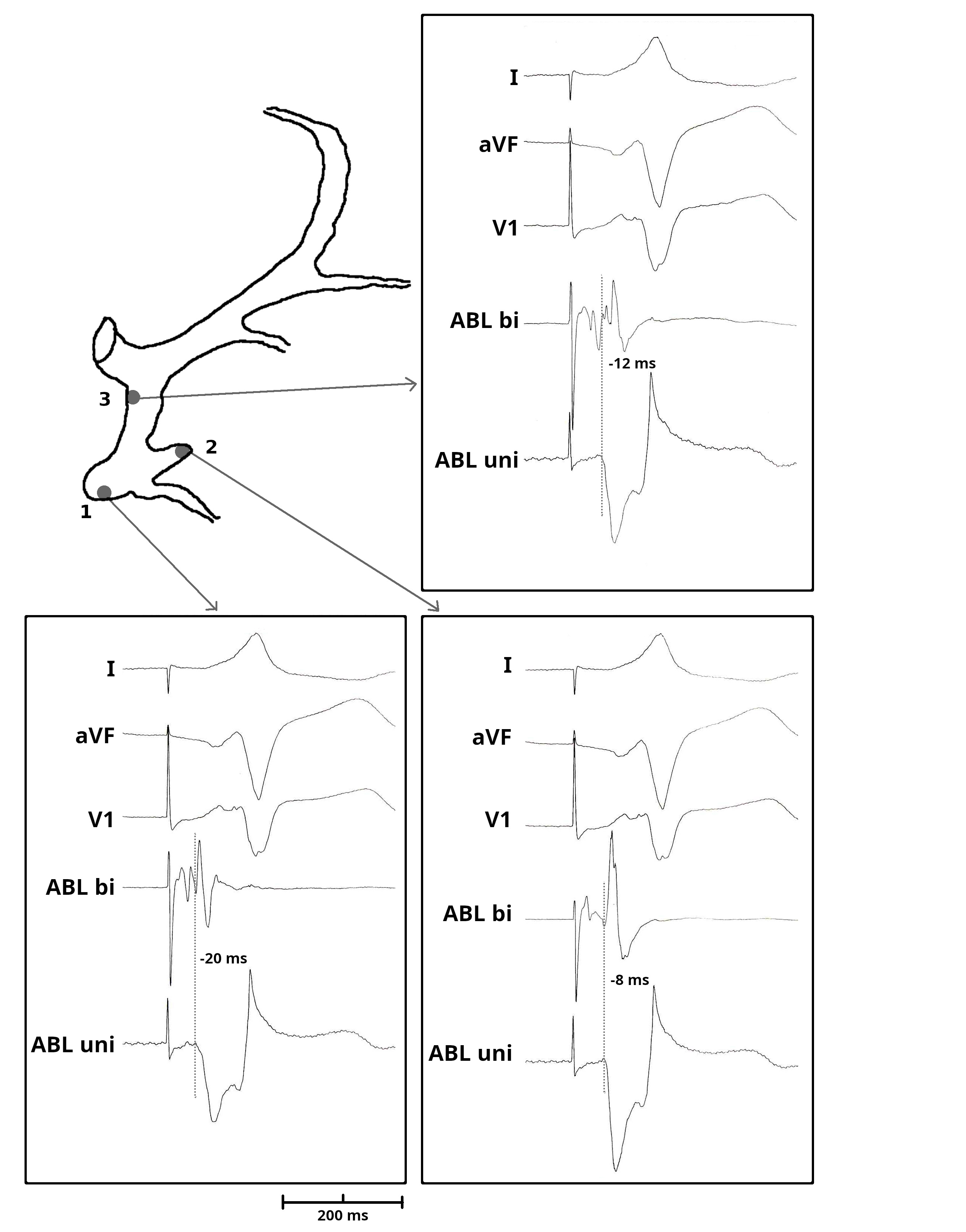
Mapping in diverticulum - CSE potential most important

Selvaraj RJ et al. Radiofrequency ablation of posteroseptal accessory pathways associated with coronary sinus diverticula. J Interv Card Electrophysiol. 2016 Nov;47(2):253-259. doi: 10.1007/s10840-016-0113-x.
In absence of diverticulum, map along tributaries
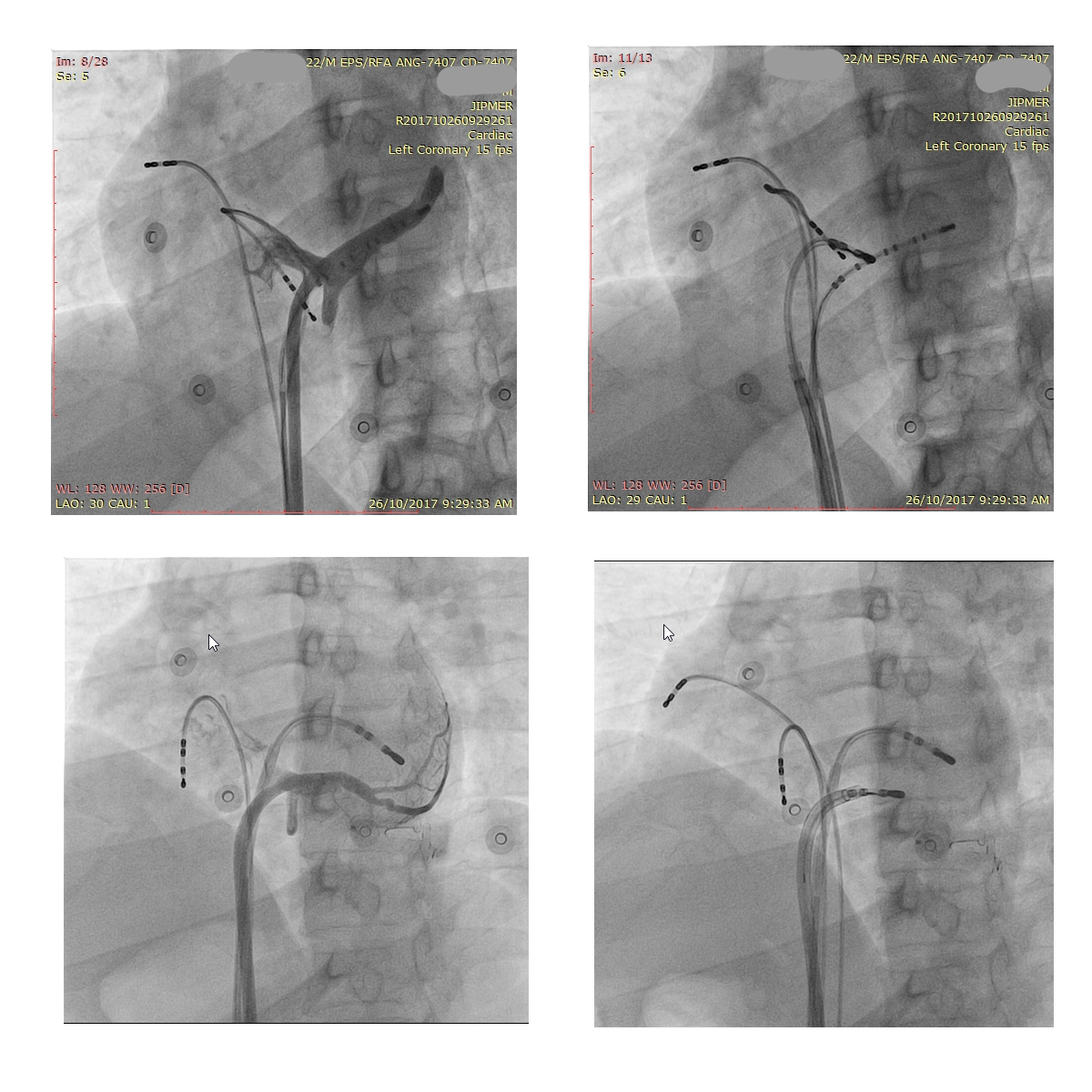
Specific locations
Anteroseptal / midseptal
Map and ablate during tachycardia
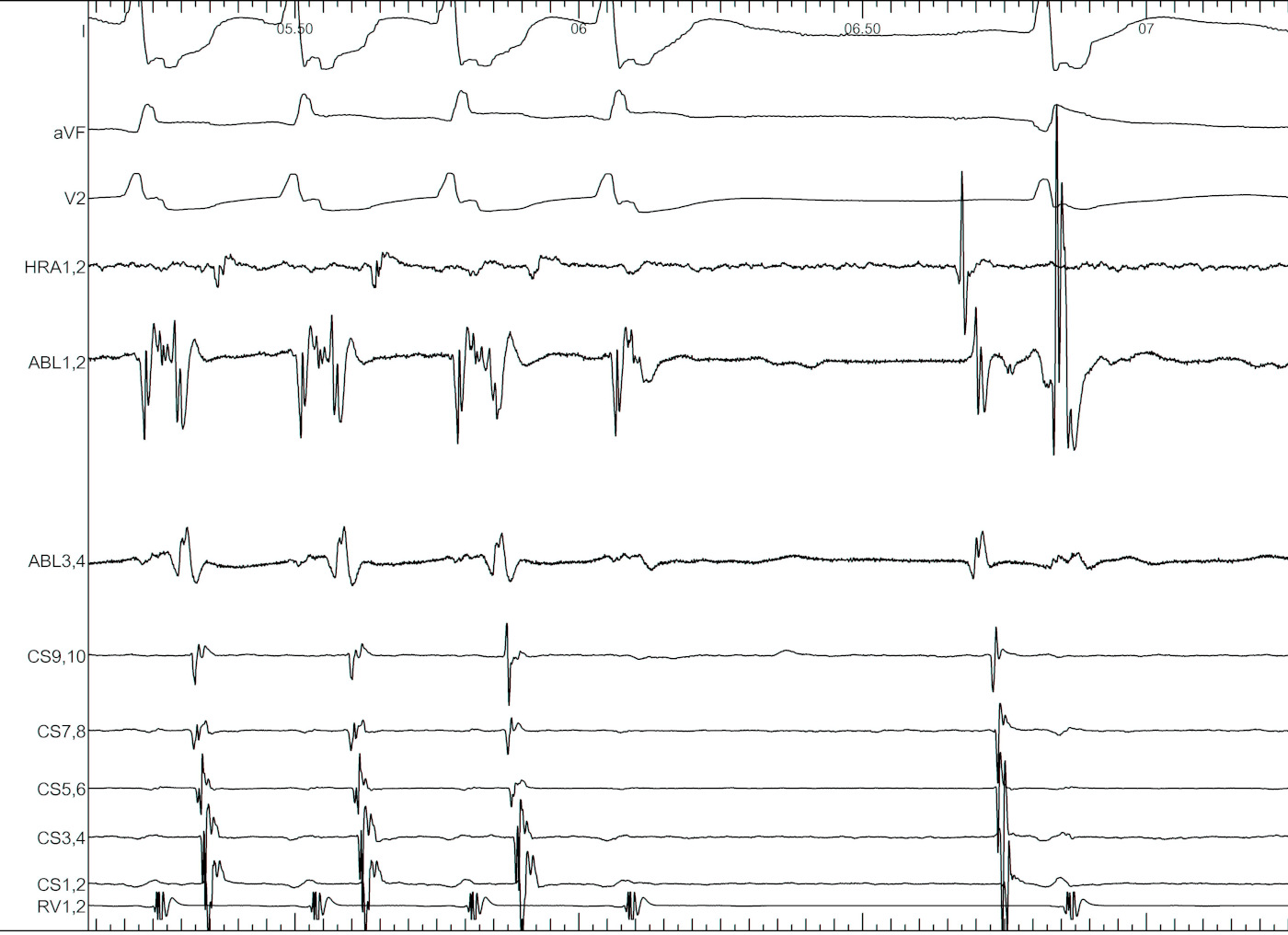
Anteroseptal AP may be ablated from non coronary cusp
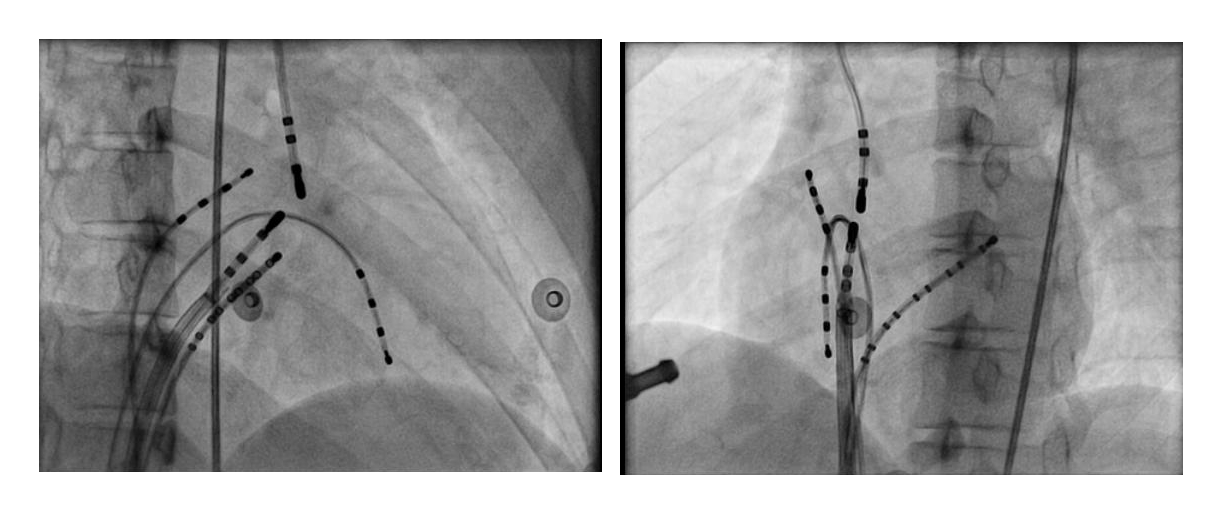
Specific situations
Left free wall
Mapping during
- Right ventricular pacing (eccentric at long CL)
- CS pacing (manifest preexcitation)
- Orthodromic tachycardia (sustained tachycardia)
- Left ventricular pacing
Entrain when ablating free wall AP during tachycardia
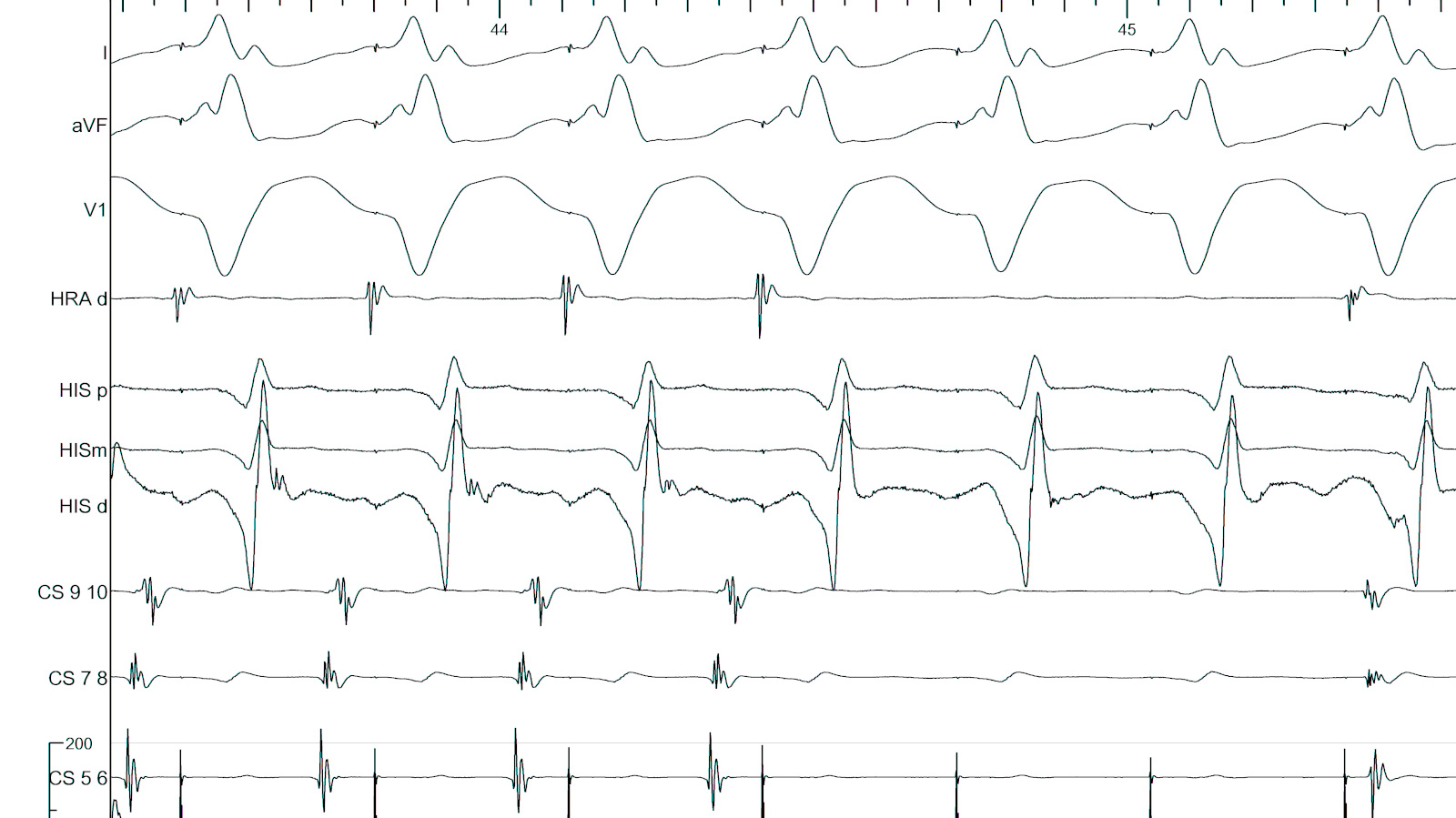
Pacing from LV
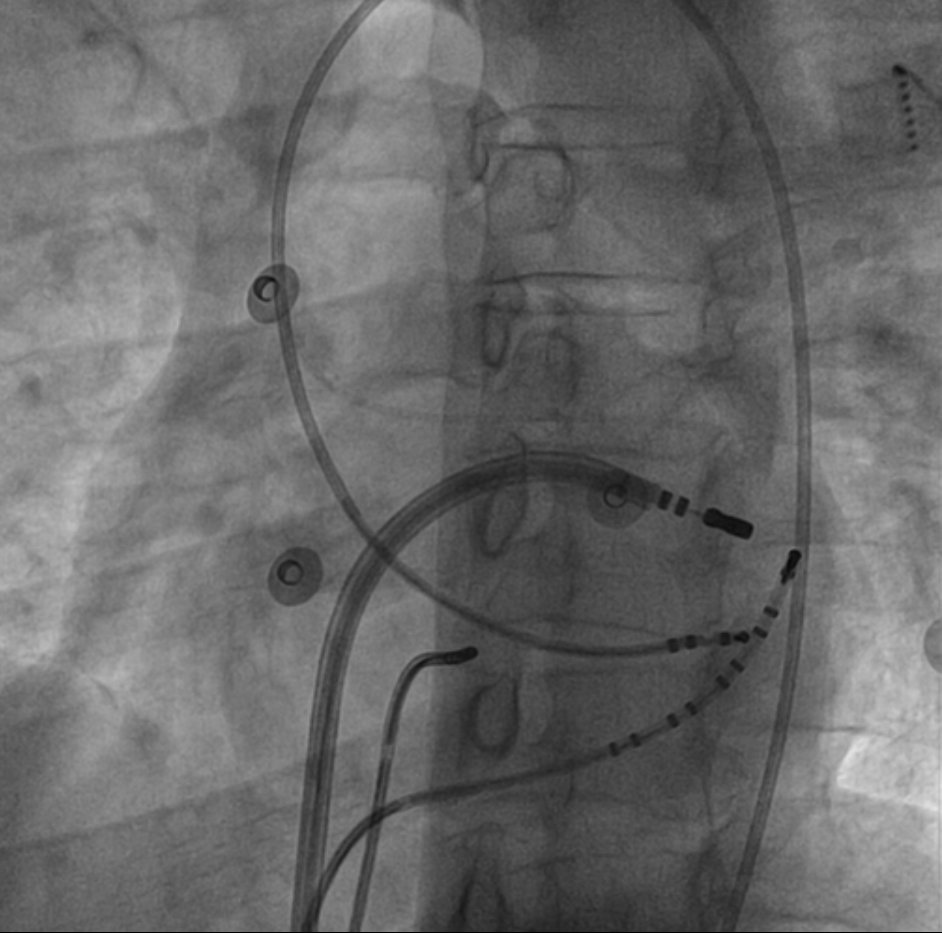
Pacing from CS tributary

Isthmus block
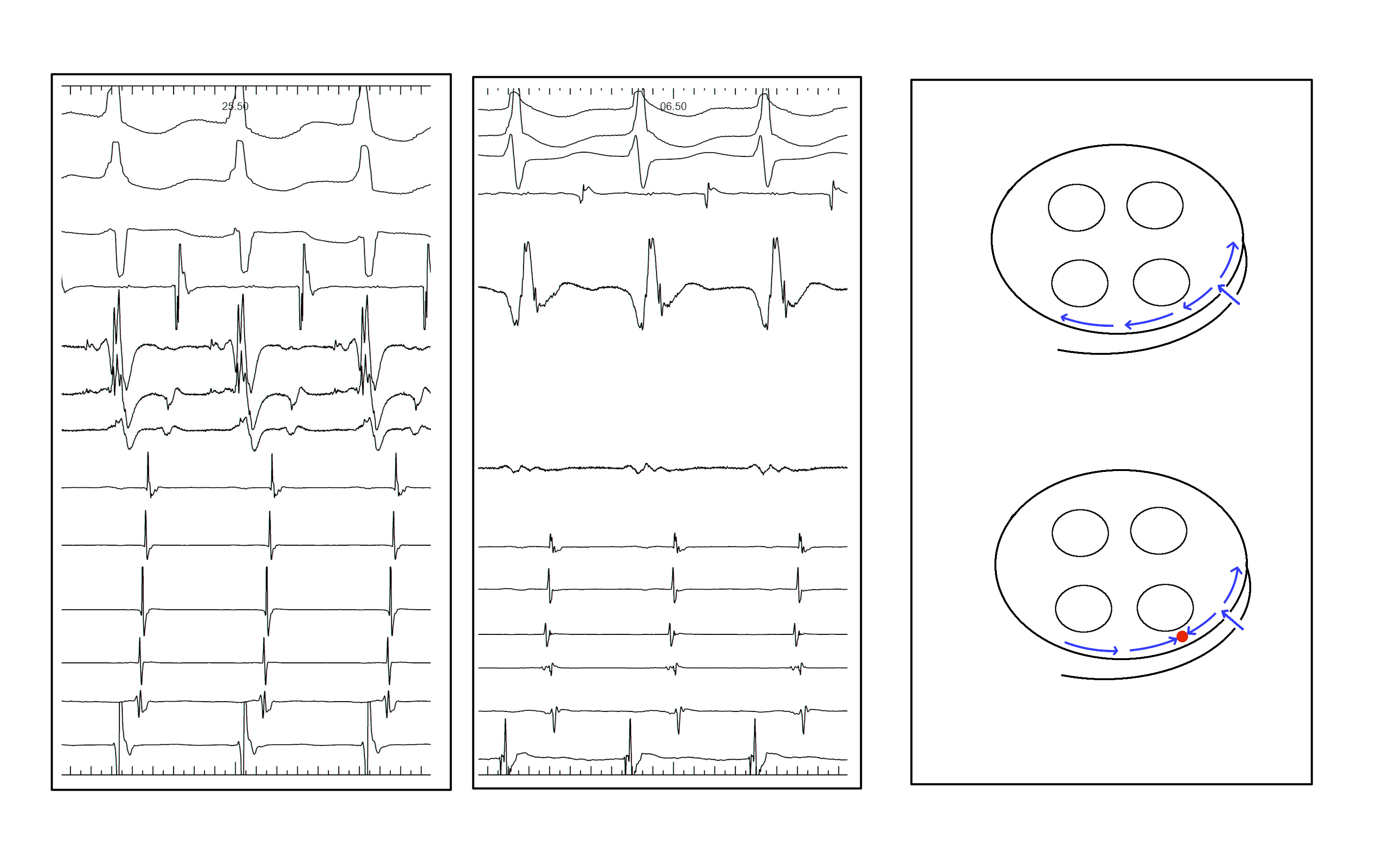
Non annular location of AP

Non annular location of AP

Appendage pathways
- RAA to RV
- LAA to LV
- Endocardial ablation from within AA may be difficult
- Epicardial approach may be required
- Proximity of major coronary arteries to LAA
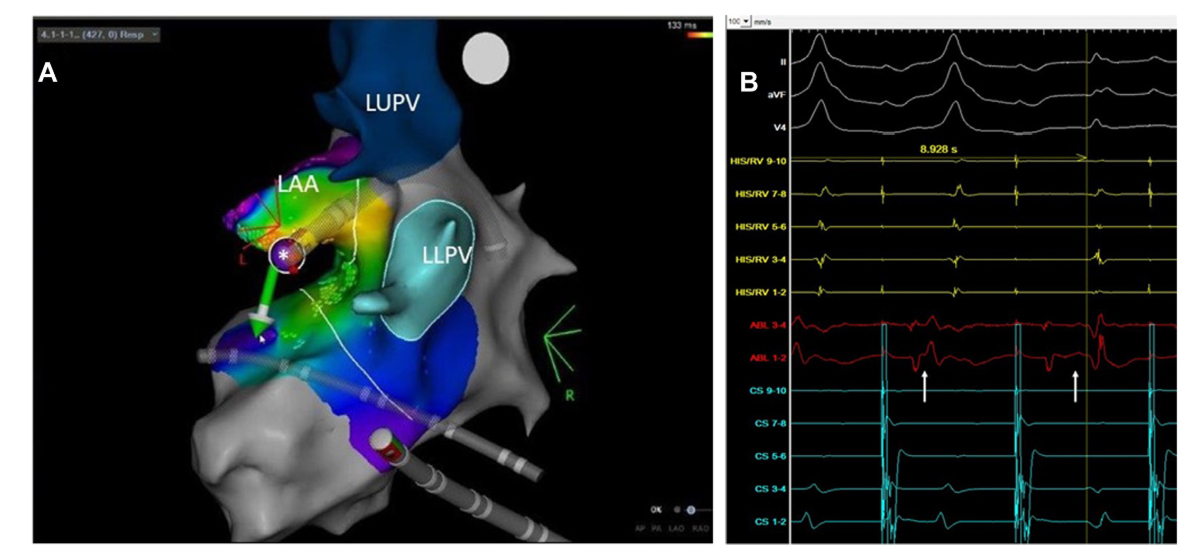
Nikola Dragisic, MD, FACC, Emily R. Backes, MD, Lindsey Malloy-Walton, DO, MPH, Philip M. Chang, MD, FACC, FHRS. Atrial appendage accessory pathway ablation: Tips for recognition and approach to ablation. Heart Rhythm Case Reports, Vol 9, No 12, December 2023 876
Specific locations
Right free wall
Sheath
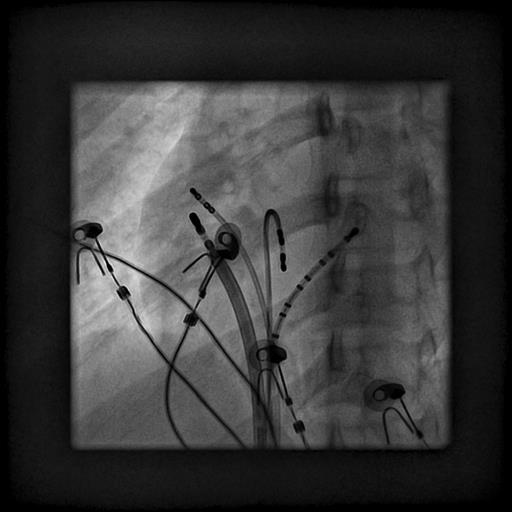
Under valve approach
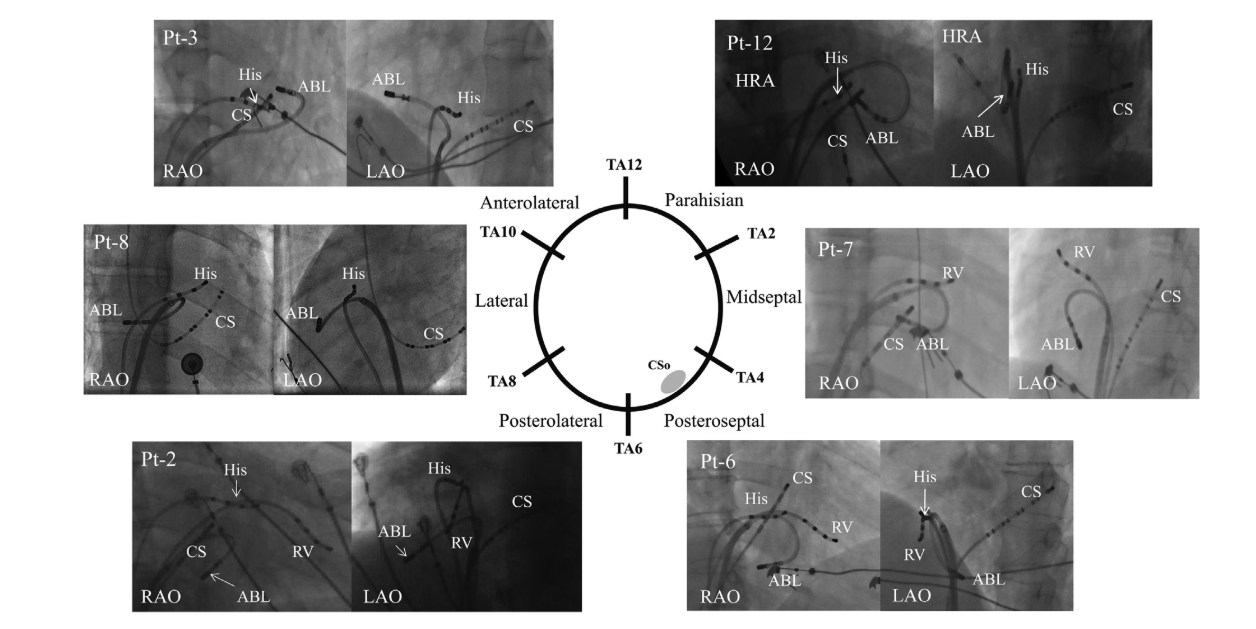
Yang J, Yang G, Chen H, Ju W, Yang B, Zhang F, Jin Y, Cao J, Qian L, Chen M. An alternative under-valve approach to ablate right-sided accessory pathways. Heart Rhythm. 2019 Jan;16(1):51-56. doi: 10.1016/j.hrthm.2018.07.022. Epub 2018 Jul 19. PMID: 30031200.
3D mapping for AP ablation
Benefits of 3D mapping
- Reduces Fluoro
- Non annular pathways
- Tag areas for ablation
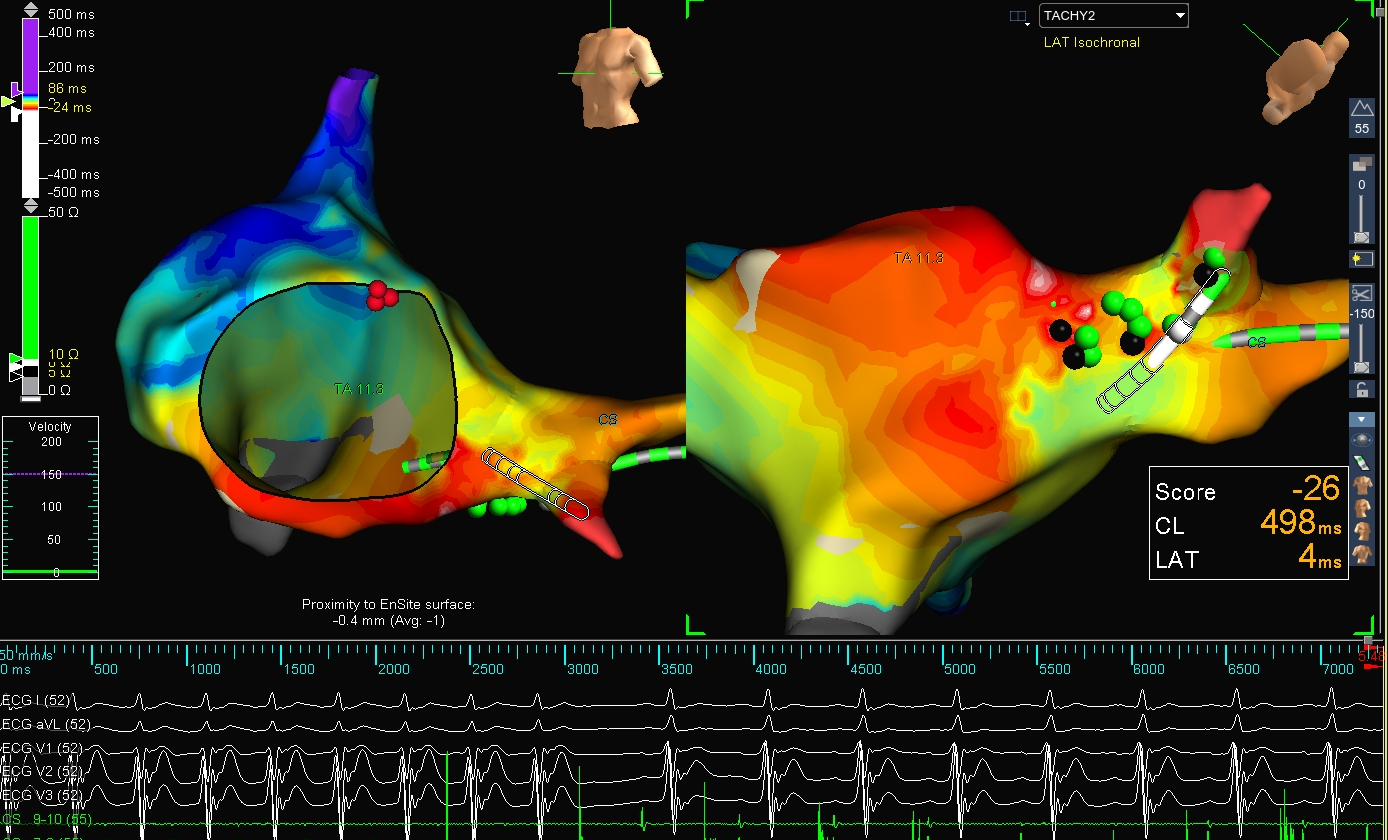
Long RP - Activation mapping
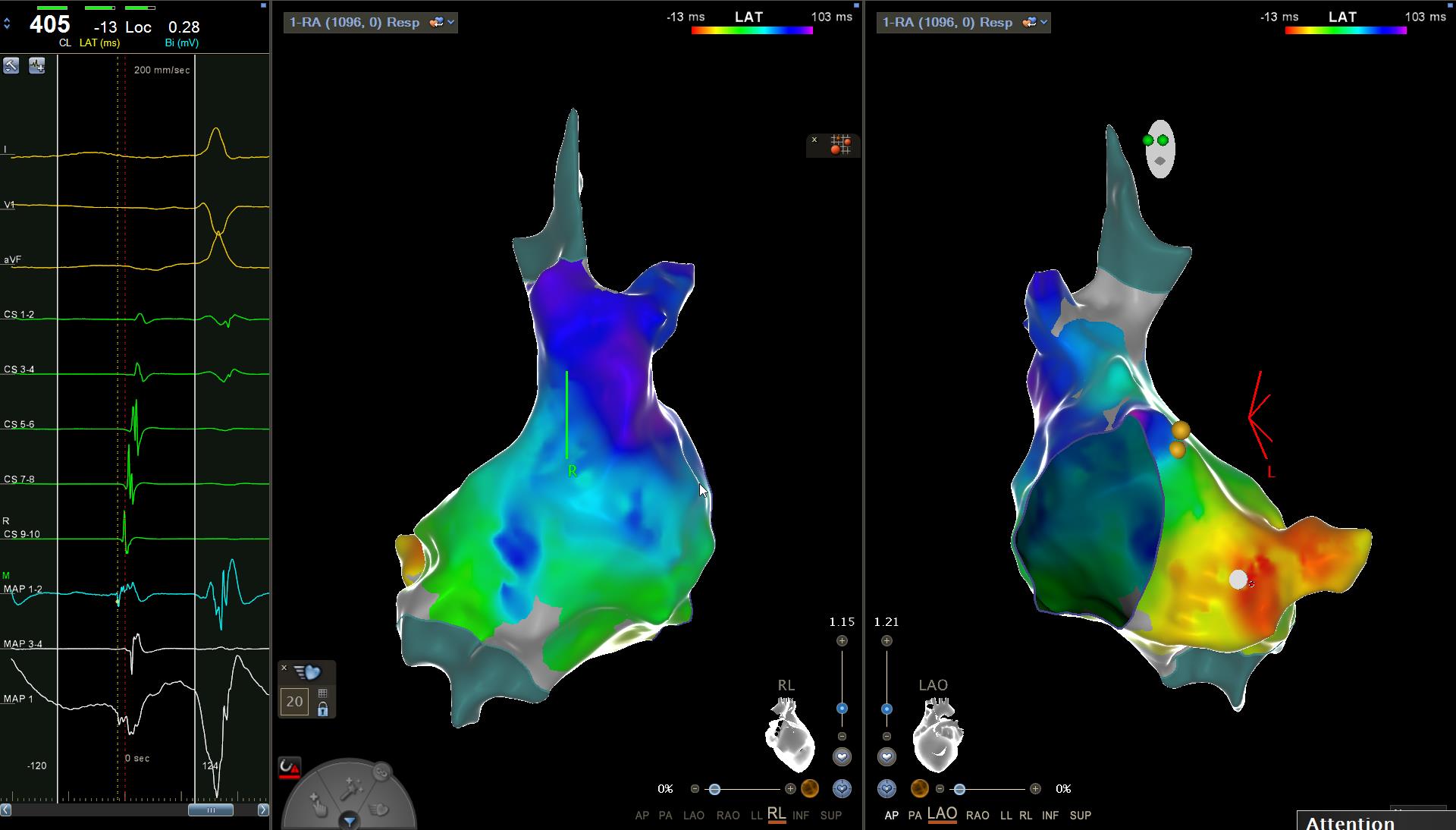
Short RP - Open window mapping
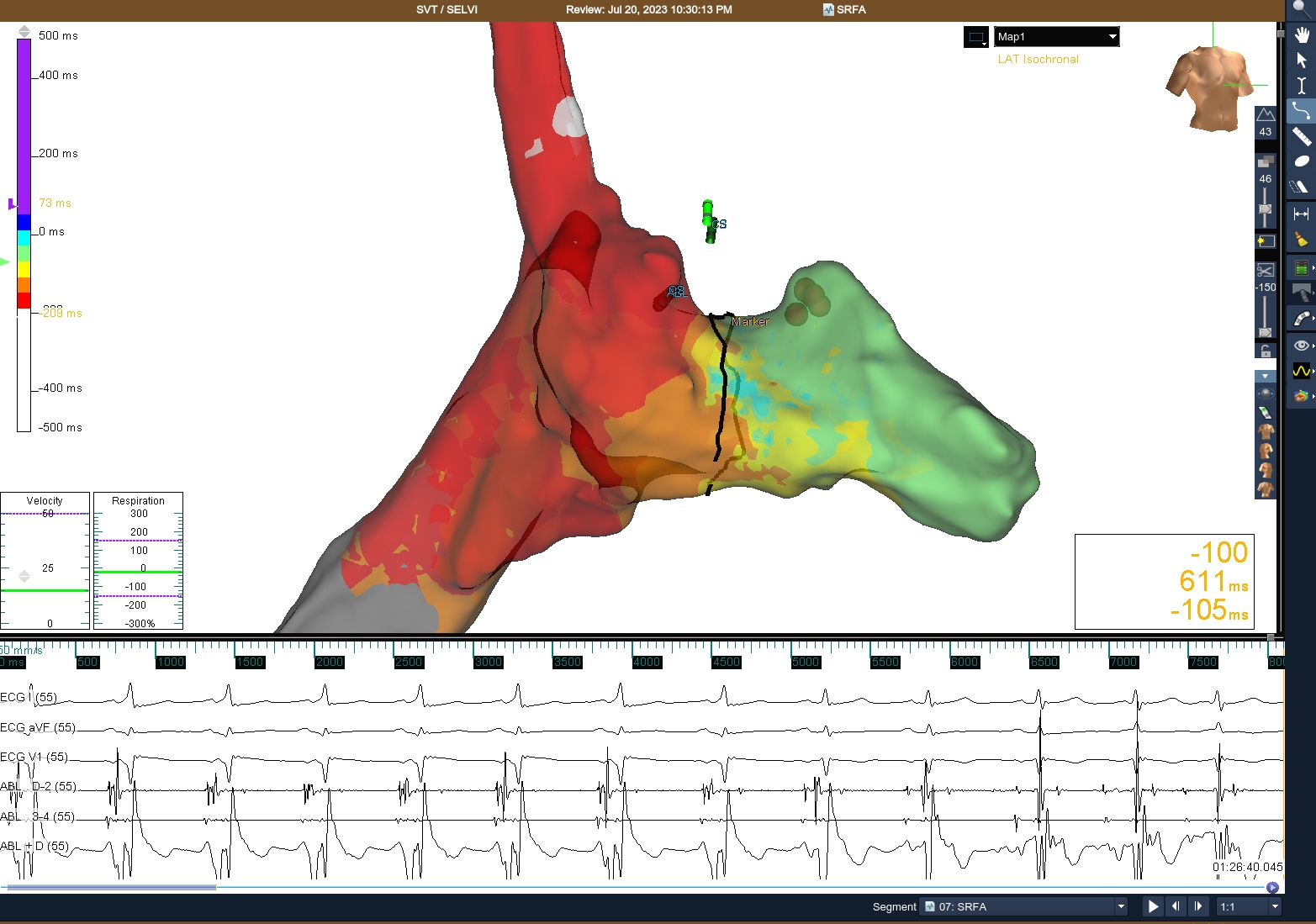
Open window mapping
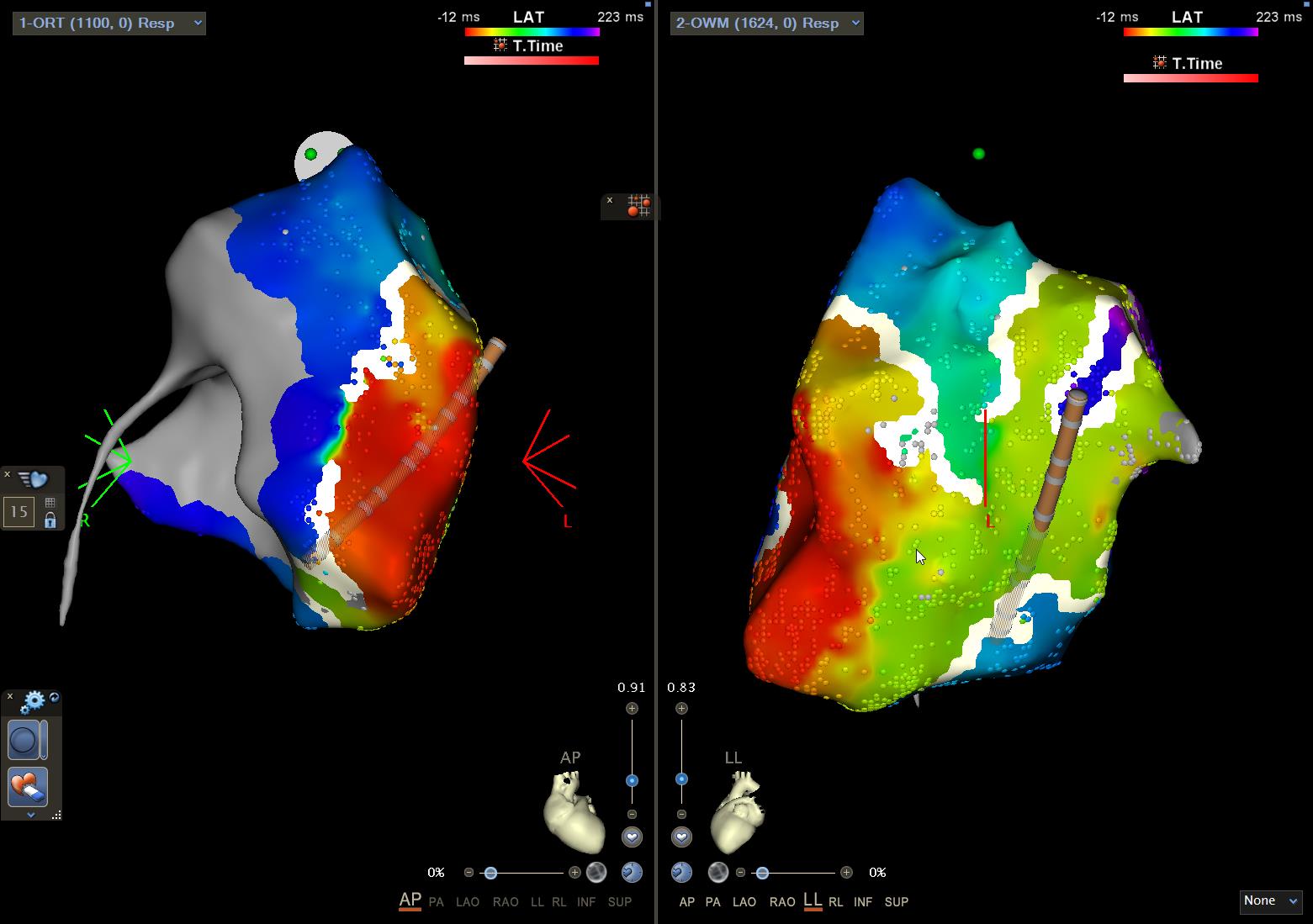
Epicardial ablation
Epicardial ablation - CS pathway
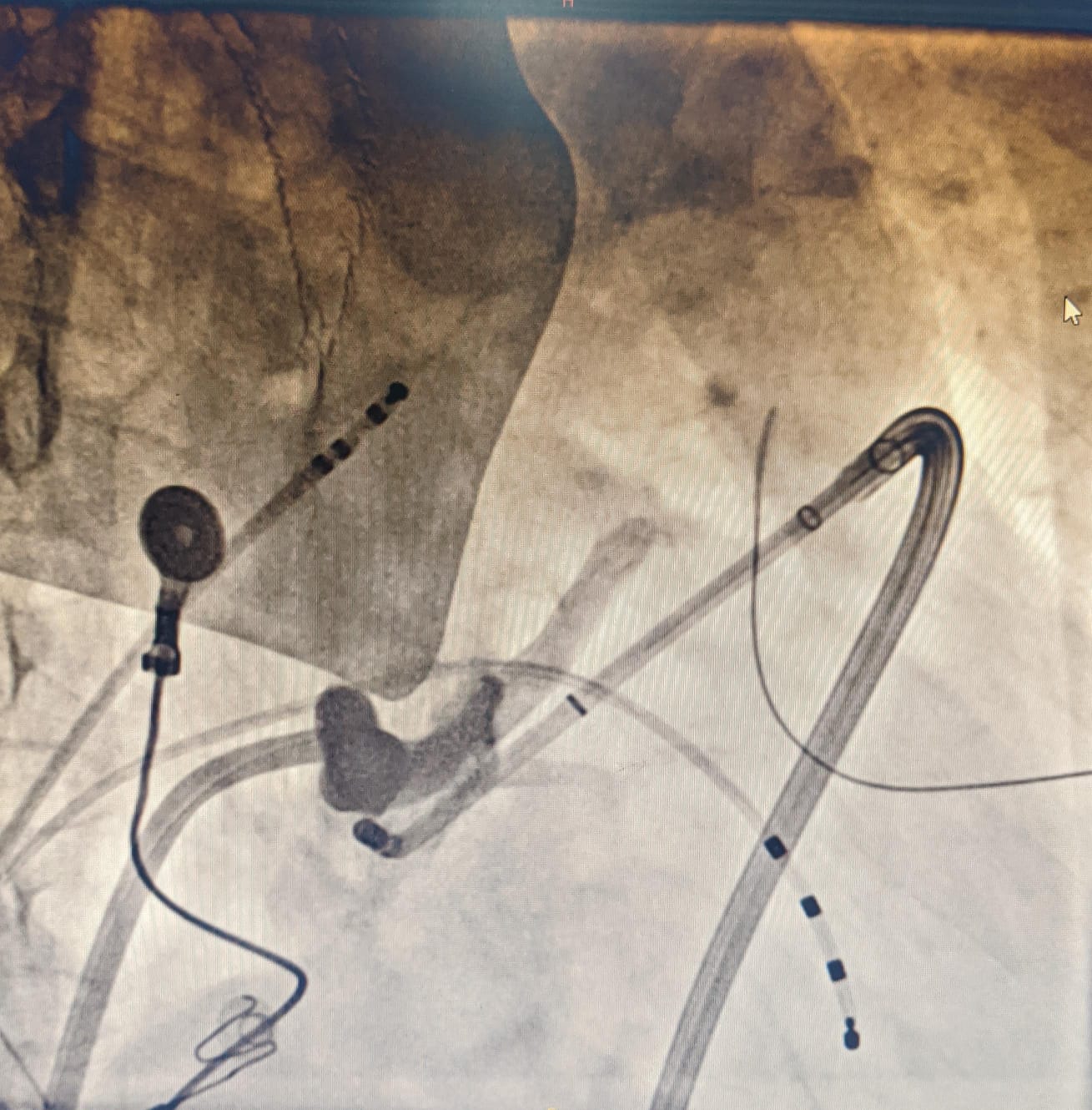
Courtesy of Dr.John Roshan, CMC
Epicardial ablation - CS diverticulum with ostial atresia
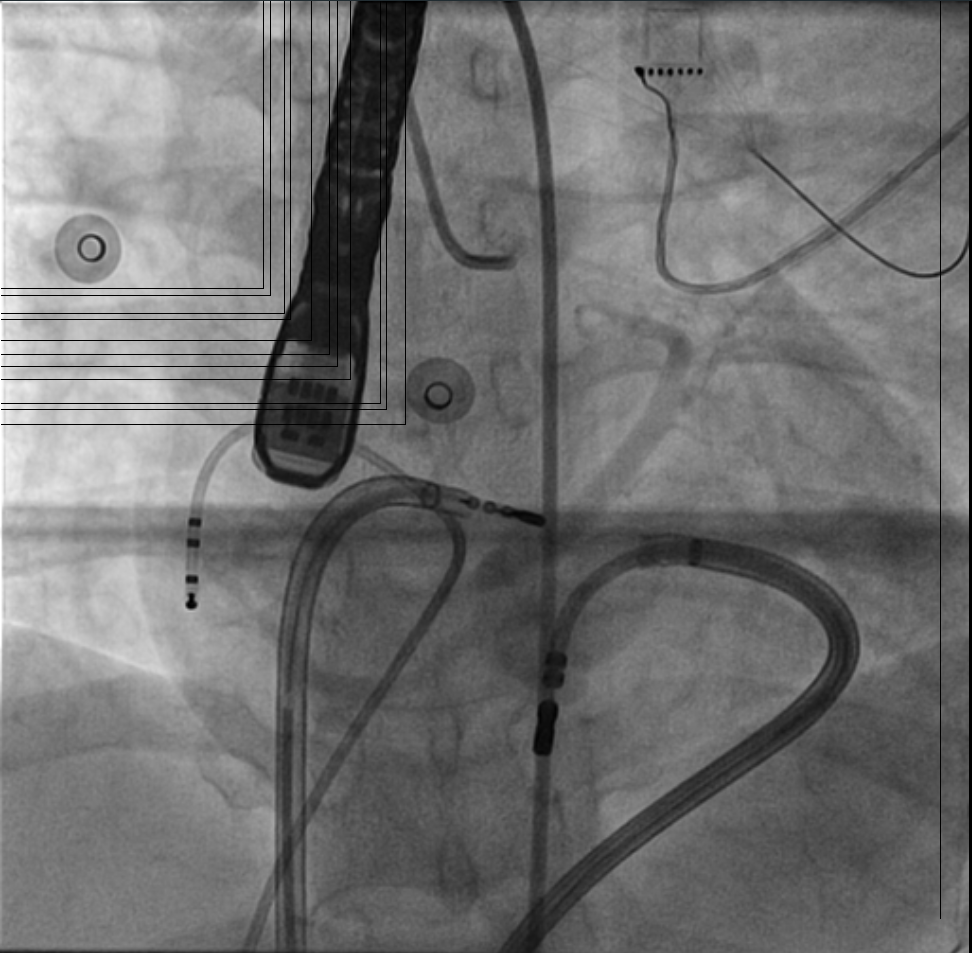
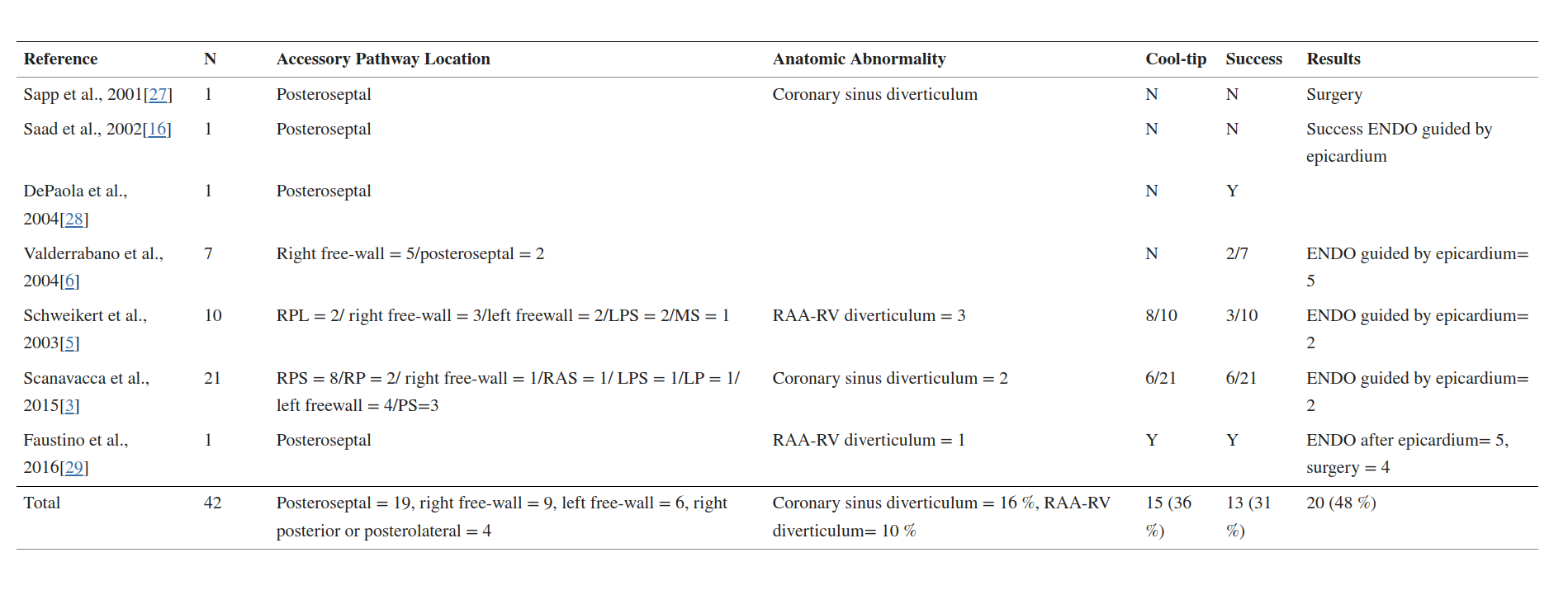
Sternick EB, Faustino M, Correa FS, Pisani C, Scanavacca MI. Percutaneous Catheter Ablation of Epicardial Accessory Pathways. Arrhythm Electrophysiol Rev. 2017 Jun;6(2):80-84. doi: 10.15420/aer.2017.6.2. PMID: 28835839; PMCID: PMC5522715.
Summary
- Signals more important than colours
- Combination of bipolar and unipolar signals
- Recording AP potential is critical